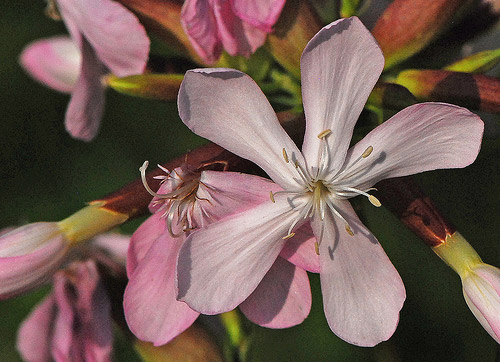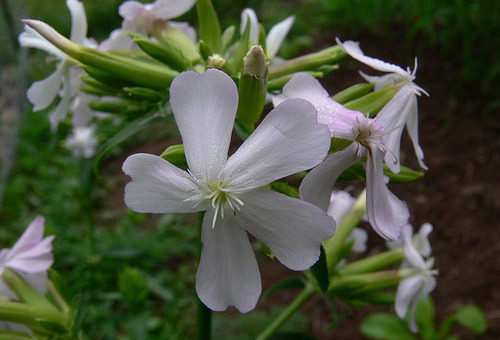
It’s that time of the week again & Monday is a great day to learn about another of those pesky plants your horse can’t eat. Today a look at a plant whose bark is much worse than its bite, the Bouncing Bet.
A Little About Bouncing Bet
Saponaria officinalis is Bouncing Bet, also commonly called Soapwart. This plant is a perennial weed with jointed stems that grows about knee height. Leaves are slightly hairy and notch-tipped flowers are white, pink or red and grow in clusters.
How Dangerous Is It?
Not very, it’s extremely unpalatable and animals have been known to refuse grain containing Bet seeds. However during a difficult drought season animals should be kept away. This plant contains saponins (concentrated in the seeds) which are a low level toxin.
All parts of this plant are toxic (especially the seeds & roots).

What To Look For
You know your animal the best, so you should know when something is amiss. Bouncing Bet toxicity symptoms can include diarrhea (sometimes bloody), loss of coordination, difficulty breathing, ataxia and coma.
Learn More
Be sure to check out the Bouncing Bet page to learn more about the plant and while you are at it why not check out more toxic plants?
*It should be noted that I’m not a veterinarian. This information is written specifically for horses and should be used for reference purposes only. If you think your horse has eaten something toxic call your vet right away.

This plant has developed such aggressive colonies along the roadside and river bank that it is spreading readily into the field and yard and displacing more useful as well as indigenous plants. It is not responding to glyphosate and I am looking for an alternative means to dispense with it. Note that I did not plant it, never would recommend it to anyone as an ornamental, and as far as I’m concerned it should be considered invasive. Looking for the best ways to terminate this plant without contaminating the soil with toxins for years to come. The rhizomes make it impossible to exterminate by hand.